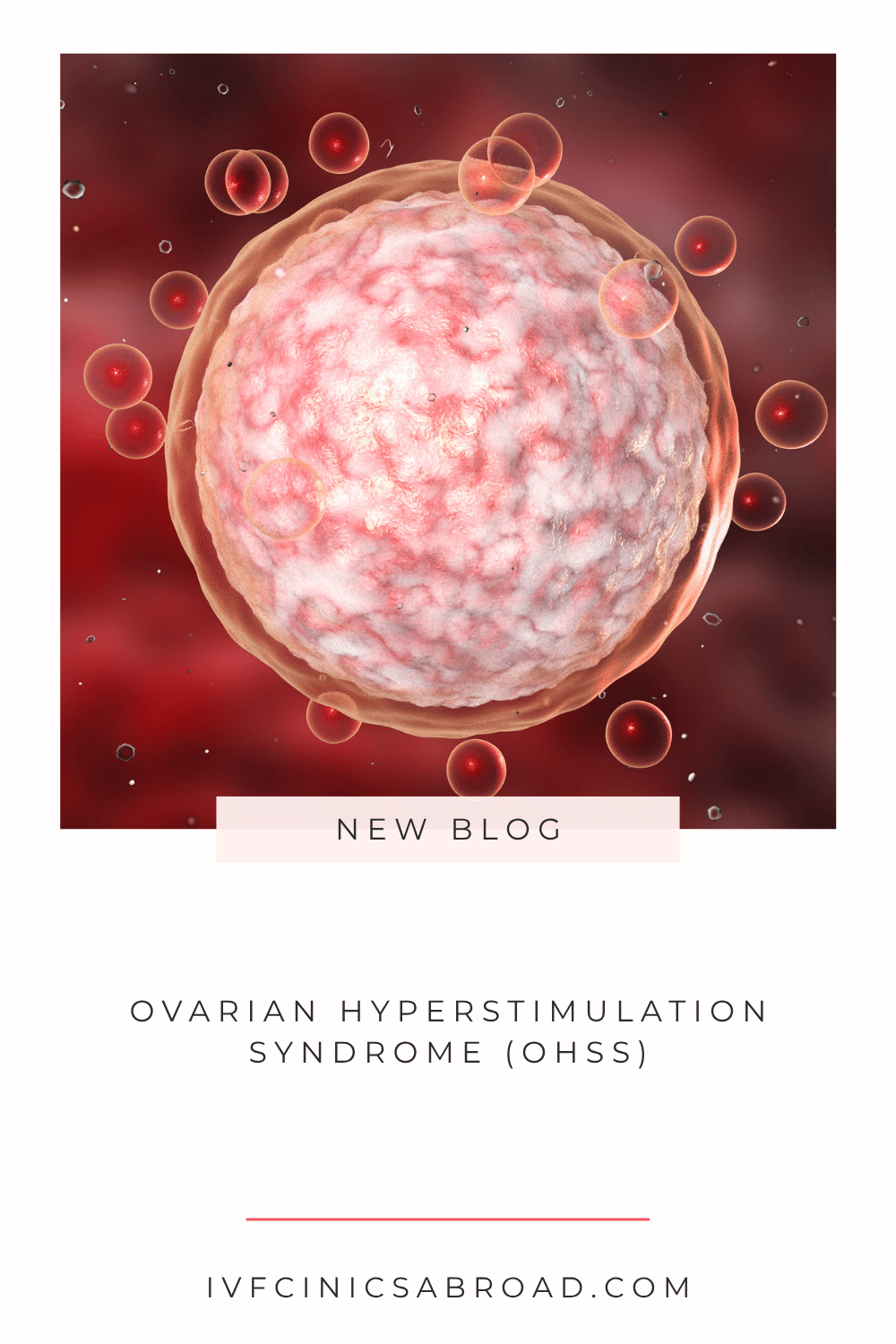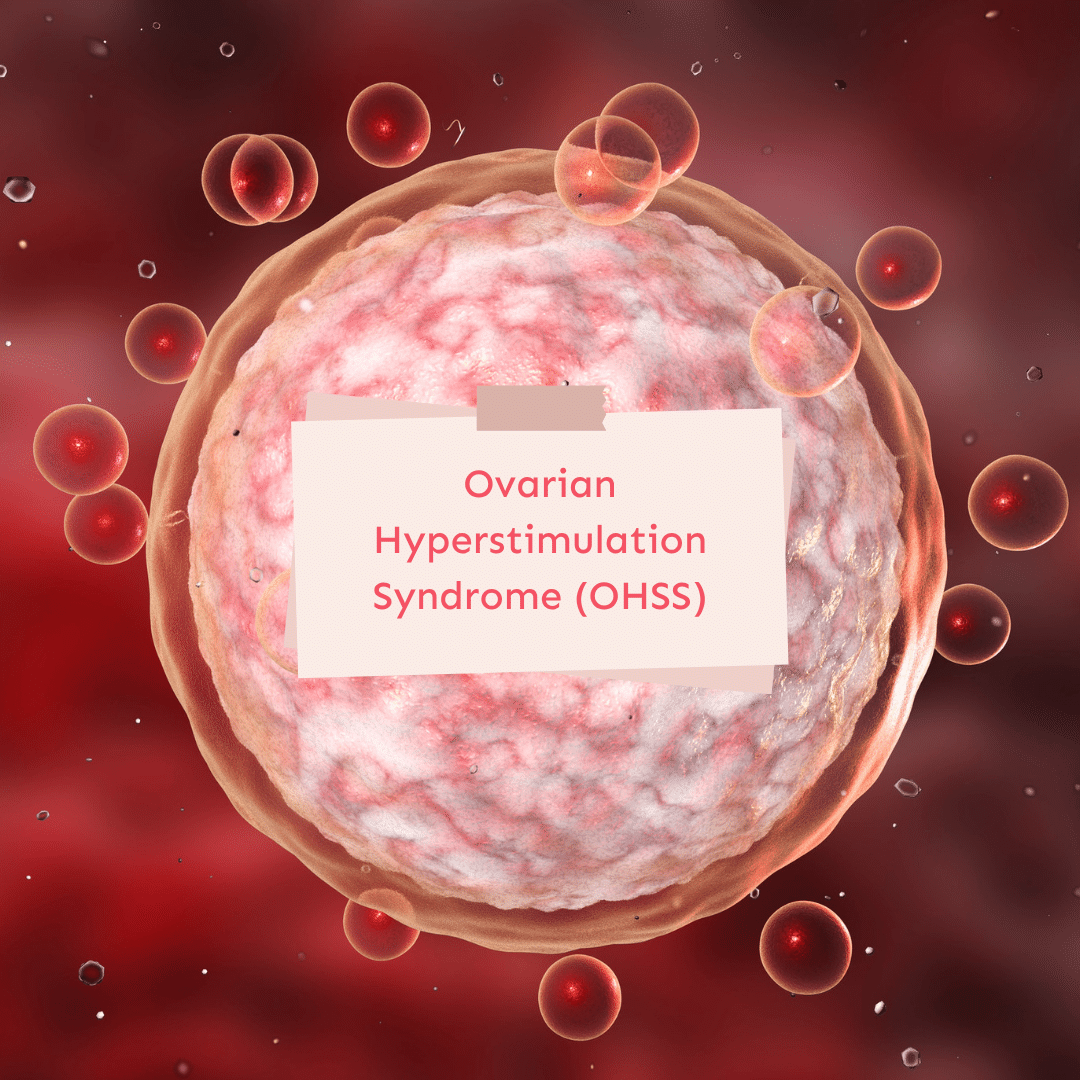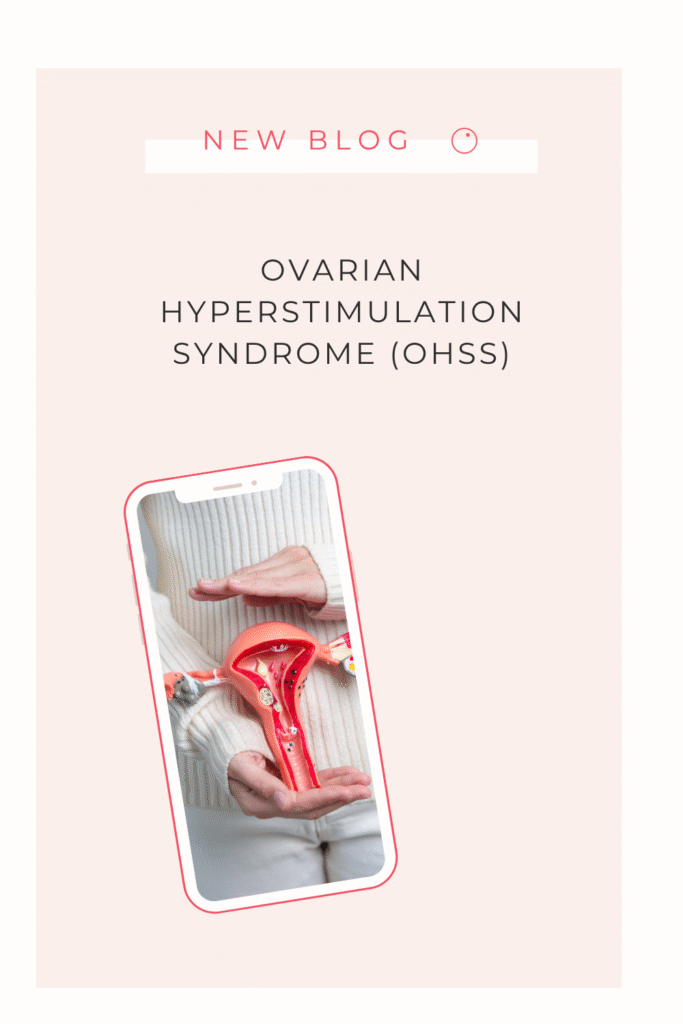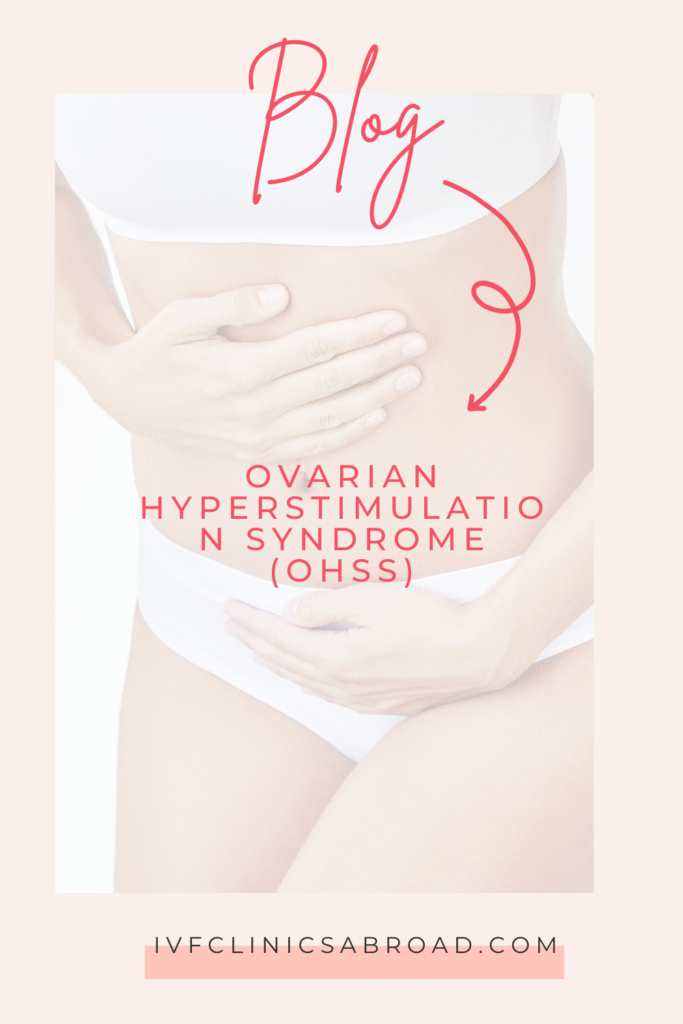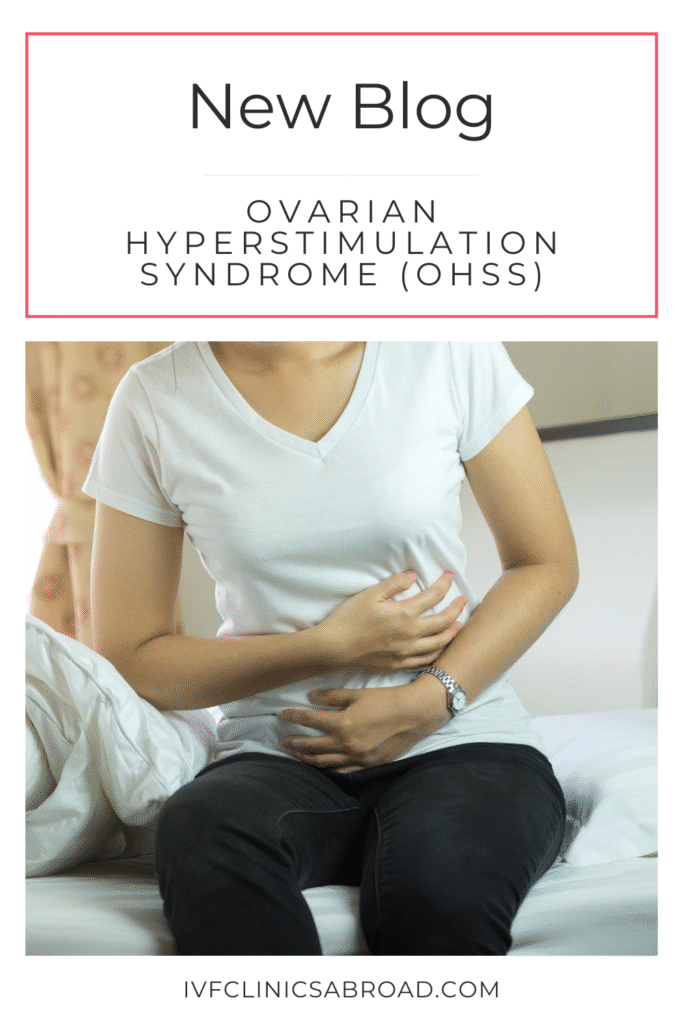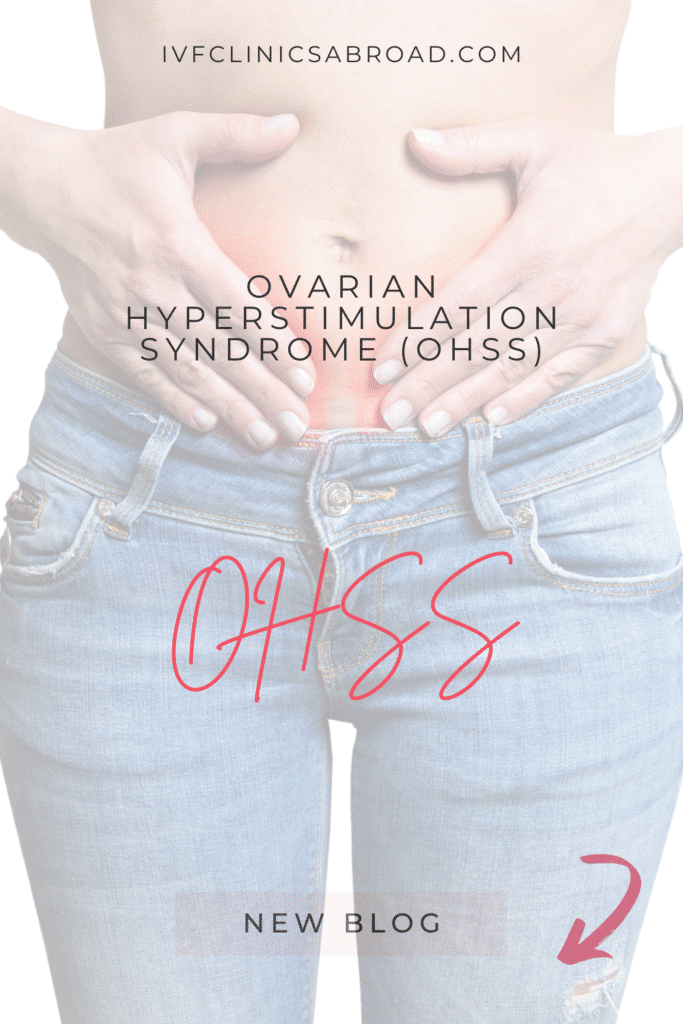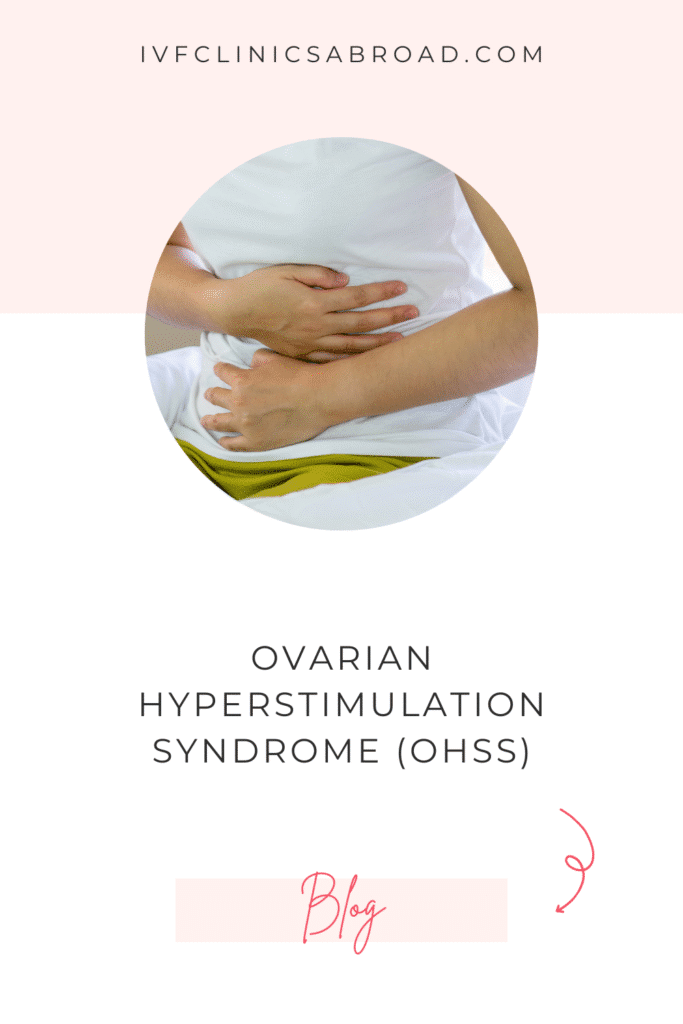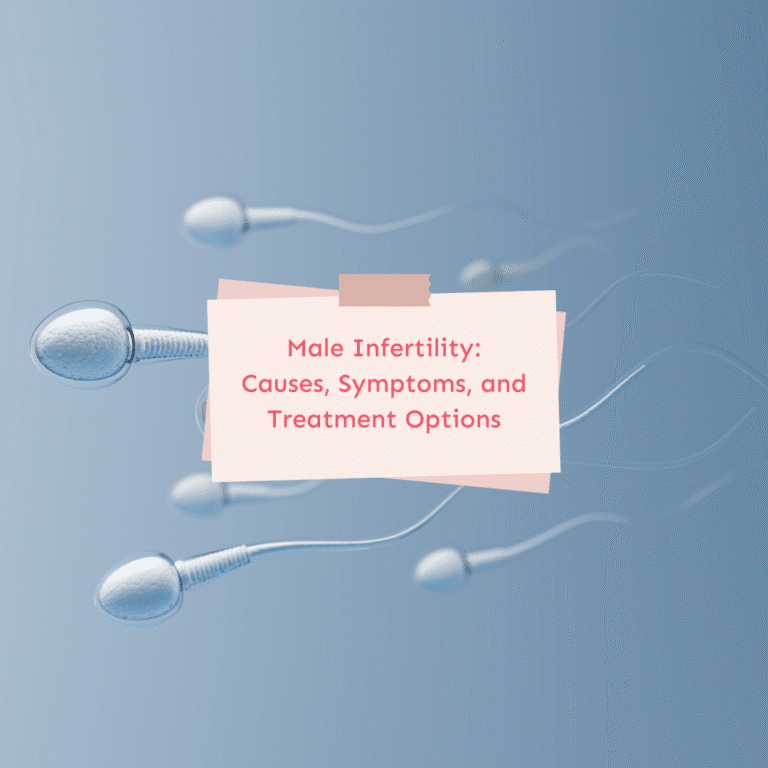Ovarian Hyperstimulation Syndrome (OHSS)
When you’re preparing for IVF, there’s a lot to take in. From hormone injections to embryo transfer, the entire journey can feel overwhelming – and sometimes even scary. One term that might come up during your research or first clinic appointment is ovarian hyperstimulation syndrome, or OHSS. It sounds technical, but don’t worry – we’ll explain everything step by step.
In this article, we’ll talk about what OHSS actually is, why it can happen, and what it means for you if you’re going through fertility treatment. Whether you’re using your own eggs or considering egg donation, understanding the risk of OHSS is important – especially if you’re travelling abroad for treatment. We’ll also look at real strategies to prevent OHSS, manage symptoms, and make confident decisions for your next IVF cycle. From mild OHSS to severe cases, knowing what to expect can make all the difference.
So let’s take a deep breath, get comfortable, and take a closer look at this complication of fertility treatment – together.
What is ovarian hyperstimulation syndrome (OHSS)?
Ovarian hyperstimulation syndrome is a medical condition that can occur during fertility treatment, especially in IVF. It happens when the ovaries respond too strongly to fertility medication, leading to swelling and fluid build-up in the abdomen. In most cases, the symptoms are mild and go away on their own, but in some situations, the condition can become moderate or even severe. Understanding the development of OHSS and its different forms is important when you’re planning your IVF treatment abroad.
The syndrome is most often associated with the use of hormone injections that stimulate the ovaries to produce multiple follicles. This is known as ovarian stimulation and is a standard part of most IVF protocols. But sometimes, the response is stronger than expected – especially in women who already have a high ovarian reserve or conditions like polycystic ovary syndrome. In these cases, the ovaries produce too many follicles, which can lead to an increase in vascular permeability of the ovarian tissue. This is what causes fluid to leak into the abdominal cavity and creates the uncomfortable symptoms associated with OHSS.
While the idea of any complication might sound frightening, it’s worth knowing that OHSS usually resolves without medical intervention. However, some women may require support – especially if symptoms progress from mild to moderate or severe. Later in this article, we’ll explore how to recognise warning signs early and what to do if symptoms escalate.
How OHSS develops during ovarian stimulation
During a typical IVF cycle, women undergo controlled ovarian stimulation to help the body produce multiple eggs. This is done with hormone medications, which are adjusted depending on your age, ovarian reserve and overall response to ovarian stimulation. In some women, especially those with polycystic ovarian syndrome, the ovaries can become overactive – meaning they grow too many follicles too quickly.
This overstimulation can cause a chain reaction in the body. As oestrogen levels rise, the blood vessels in the ovaries become more permeable, leading to a shift of fluid into the abdominal cavity. The resulting swelling is one of the first signs of OHSS. In severe cases, this fluid can even move into the chest area, making it harder to breathe. The form of OHSS you develop depends on how your body reacts to the medication – and whether early symptoms are recognised and addressed.
Most clinics use ultrasound and bloodwork to monitor your ovarian response throughout the stimulation phase. This helps them spot early signs of developing ovarian hyperstimulation syndrome and make timely changes to your protocol if needed. Adjusting the dose or using a different trigger medication can often prevent OHSS before it starts.
Symptoms associated with OHSS and how to recognise them
Symptoms of OHSS can range from mild bloating to severe abdominal pain and breathing difficulties. The most common early signs include nausea, a feeling of fullness, and noticeable weight gain due to fluid retention. If left untreated, these symptoms can become more serious, leading to ovarian enlargement, shortness of breath and even hospitalisation.
In moderate OHSS, women often experience abdominal discomfort, increased thirst and reduced urine output. Severe OHSS, on the other hand, is a medical emergency. It can include symptoms such as rapid weight gain, severe pain, vomiting, and signs of dehydration. In rare cases, complications such as blood clots, kidney problems or ovarian torsion may occur.
Because the symptoms of OHSS may overlap with normal side effects of IVF treatment, it’s not always easy to tell what’s normal and what’s a sign of trouble. That’s why it’s important to stay in close contact with your clinic during ovarian stimulation. If you’re unsure whether what you’re feeling is part of the usual process or something more serious, always reach out – even if it feels like a small concern.
Who is at risk of OHSS?
Not every woman who goes through IVF will experience ovarian hyperstimulation syndrome, but some are more likely to develop it than others. Understanding the individual risk of OHSS can help you and your doctor choose a stimulation protocol that works with your body – not against it. Clinics today are usually very good at predicting how someone might respond to treatment, but OHSS can still happen even when everything seems to be under control.
The risk of OHSS varies depending on your personal situation. Factors such as age, body mass index, hormone levels, and underlying conditions like polycystic ovary syndrome all play a role. Some women may be completely unaware that they’re at increased risk, especially if they’ve never had fertility treatment before. This is why proper monitoring and open communication with your medical team are so important during every stage of an IVF cycle.
Having a higher ovarian reserve or producing a large number of follicles in response to stimulation can increase the risk of developing OHSS. In other words, the more active your ovaries are, the higher the chance that they might overreact to medication. That doesn’t mean you should worry – but it does mean your clinic should be watching closely.
Risk factors for OHSS in IVF treatment
There are several factors that make someone more likely to develop OHSS during an IVF cycle. One of the biggest ones is age. Women under 35 – especially those with a strong ovarian response – are more likely to produce many follicles during stimulation, which can raise the risk of OHSS. Another common factor is having polycystic ovary syndrome, a hormonal condition that affects how the ovaries function and increases sensitivity to fertility medication.
Other factors include high levels of oestradiol, a large number of growing follicles seen on ultrasound, and the use of certain hormone triggers. Women with a leaner body type may also respond more strongly to stimulation. Your clinic will usually assess your ovarian reserve and hormone profile before starting treatment, so they can tailor the protocol to your needs.
Some protocols are designed specifically to reduce the incidence of OHSS in women who are considered high risk. These may include using lower hormone doses or different medications. Prevention starts with identifying who is at risk – and choosing a safer approach from the beginning.
Why some women develop OHSS more easily than others
The reason some women develop OHSS more easily has to do with how their bodies respond to ovarian stimulation. Every woman’s hormonal system is different. While some respond gradually and predictably to stimulation, others have a sudden spike in oestrogen or produce an unusually high number of follicles – even at standard doses. This exaggerated response is what sets the stage for OHSS.
In women with polycystic ovarian syndrome, for example, the ovaries are already sensitive and full of small follicles. When stimulation begins, these follicles may grow rapidly and in large numbers, increasing the risk for OHSS. Additionally, certain genetic factors and variations in hormone receptors may play a role in how likely a woman is to develop OHSS, but this is still being studied.
One thing is clear: OHSS is not your fault. It’s a reaction to medication that can happen even when the treatment plan seems perfect. If you’re someone who’s more likely to develop OHSS, knowing this in advance can help you and your clinic make smarter, safer choices from the very start.
“If you’ve developed OHSS, it’s often safer to postpone the embryo transfer. Studies show that fresh transfer in the presence of OHSS significantly increases the risk of miscarriage and complications. Waiting for your body to recover can protect both your health and the future pregnancy.”
Nathalie Wiederkehr
IVF and controlled ovarian stimulation
Controlled ovarian stimulation is a central part of IVF. It’s the process where hormone medications are used to help your ovaries grow more follicles than they would naturally. The goal is to collect multiple eggs, increasing the chances of creating healthy embryos. But while this method is highly effective, it can also increase the risk of ovarian hyperstimulation syndrome in some women – especially if the response is stronger than expected.
When you’re undergoing ovarian stimulation for IVF, your clinic will monitor your hormone levels and follicle growth through blood tests and ultrasound. This helps them adjust your medication dose as needed and spot early signs of overstimulation. While most women respond well to this phase, some may develop signs of OHSS even before the egg collection.
Protocols can vary from one clinic to another. Some use higher doses of hormones for women with low ovarian reserve, while others choose milder approaches for those who are considered high responders. Finding the right balance is key – because both too little and too much stimulation can affect the outcome of your IVF treatment.
Undergoing controlled ovarian stimulation in your IVF cycle
During your IVF cycle, controlled ovarian stimulation usually begins on day two or three of your period. You’ll receive daily hormone injections for several days to help your follicles grow. Depending on how your body responds, the number and size of follicles can vary – and so does the overall risk of OHSS. Clinics pay close attention to this response, as early prediction of ovarian hyperstimulation syndrome can make a big difference in prevention.
Women undergoing controlled ovarian stimulation may notice symptoms like bloating or tenderness as their follicles grow. These are normal effects of the medication. However, if the ovaries start responding too aggressively, this can lead to a higher risk of OHSS. That’s why regular check-ups during stimulation are essential – they allow your doctor to spot any unusual response and take action before it becomes a problem.
For some patients, especially those with polycystic ovary syndrome, even a standard hormone dose can trigger a strong ovarian response. In these cases, the stimulation protocol may need to be adjusted, or the cycle may be paused to prevent OHSS from developing further.
What increases the risk of developing OHSS?
There are several factors that can increase the likelihood of developing OHSS during IVF. A high number of growing follicles, elevated oestrogen levels, and the use of certain trigger medications are some of the most common indicators. Women with a history of OHSS, or those who are young with a high antral follicle count, may also be at greater risk.
In some cases, the risk of OHSS without appropriate monitoring can become serious. That’s why clinics often use antagonist protocols or lower hormone doses to help decrease the risk of OHSS. These approaches have been shown in studies – including a systematic review and meta-analysis – to reduce the incidence of OHSS compared to traditional protocols.
Ultimately, your personal risk profile determines how your stimulation is managed. Prediction of ovarian response is not always exact, but modern fertility clinics now have many ways to adjust treatment plans and reduce the chances of OHSS. Communication is key – don’t hesitate to ask your clinic what they’re doing to monitor and manage your risk during stimulation.
From moderate to severe OHSS – what to expect
Ovarian hyperstimulation syndrome can show up in different ways. While some women experience only mild discomfort, others may go through more intense symptoms that fall into the category of moderate or severe OHSS. Knowing what to expect – and when to take action – is a key part of managing your IVF experience with confidence.
Moderate OHSS can already affect your daily life, while severe OHSS may require hospital care. The symptoms often get worse a few days after the egg retrieval, especially if pregnancy occurs. That’s why it’s so important to stay in touch with your clinic after the procedure. They should tell you exactly what to look out for and when to contact them. Early detection can prevent complications and help you recover more quickly.
Symptoms of moderate OHSS and how to manage them
Moderate OHSS is more than just a bit of bloating or discomfort. It often includes symptoms like abdominal pain, nausea, vomiting, and weight gain due to fluid retention. You may also notice that your belly feels tight or distended, and you might need to urinate less often. These signs suggest that fluid is collecting in the abdomen – a hallmark of moderate OHSS.
If you’re experiencing symptoms of moderate OHSS, your clinic will usually recommend rest, increased fluid intake and careful monitoring. You might need to come in for a follow-up ultrasound or blood test to check how your ovaries are doing. In most cases, these symptoms improve within one to two weeks, but it’s important not to ignore them.
Treatment of moderate OHSS focuses on relieving discomfort and preventing the situation from getting worse. Pain relief, anti-nausea medication, and regular check-ins with your doctor can make a big difference. You don’t always need hospitalisation, but you do need medical guidance. Never hesitate to speak up if something doesn’t feel right.
What happens in cases of severe OHSS?
Severe OHSS is a rare but serious condition that requires immediate medical attention. Symptoms may include rapid weight gain, severe abdominal pain, shortness of breath, vomiting, dehydration and even fainting. In some cases, fluid can accumulate not only in the belly but also in the chest, making it difficult to breathe. Women with severe OHSS often need to be admitted to hospital for fluid management and observation.
Cases of severe OHSS can lead to complications like ovarian torsion, blood clots or problems with the kidneys. Fortunately, the incidence of severe OHSS has been significantly lower in recent years, thanks to improved monitoring and safer stimulation protocols. Still, it’s important to know that even when rare, these situations do occur – and the key to safe recovery is fast action.
Treatment of ovarian hyperstimulation syndrome in severe cases may include intravenous fluids, blood thinners, oxygen therapy or even procedures to remove excess fluid from the abdomen. According to the American Society for Reproductive Medicine, hospitalisation is often required to manage the effects and ensure that the patient is stable. Women with severe ovarian hyperstimulation need close care – but with the right support, recovery is usually complete.
It’s also important to remember that the severity and incidence of OHSS depend on many factors, including how your body responds and how early the condition is recognised. The good news: clinics today are more aware of the risks and better equipped than ever to prevent severe complications.
How to prevent OHSS before it starts
The best way to deal with ovarian hyperstimulation syndrome is to avoid it in the first place. Fortunately, many cases can be prevented with the right approach – especially if the clinic is aware of your risk profile and acts early. While OHSS may still develop in some situations, careful planning and monitoring can make a big difference.
Prevention of OHSS is not just about lowering medication doses. It’s about understanding how your body might respond and working with a team that adapts your treatment plan as things unfold. If you’re considered at high risk of OHSS – for example, due to polycystic ovary syndrome or a strong ovarian reserve – your clinic should take extra care with your stimulation protocol.
There’s no one-size-fits-all solution. But by asking the right questions, following a personalised plan, and staying alert to early symptoms, you can reduce the risk of OHSS and go through IVF feeling more confident and safe.
Strategies to reduce the risk of OHSS
There are several effective ways to reduce the risk of OHSS, and many clinics now include these in their standard IVF protocols. One of the most common strategies is to use lower doses of stimulation medication, especially in women with high ovarian sensitivity. Another option is to switch to a different type of trigger medication, such as a GnRH agonist, which has been shown to lower the incidence of OHSS compared to traditional hCG triggers.
Other strategies include using antagonist protocols, freezing all embryos instead of transferring them fresh, and delaying the transfer to a later cycle. These methods are designed to give the body time to recover before pregnancy hormones can worsen OHSS symptoms. According to a systematic review and meta-analysis, these prevention techniques are especially helpful in high-risk patients.
In some cases, your doctor might even suggest cancelling the cycle if the risk becomes too high – something that sounds disappointing at first, but can actually be the safest choice.
What prevention of OHSS really looks like in practice
In real life, preventing OHSS is not always about avoiding stimulation altogether – it’s about staying flexible. Prevention of ovarian hyperstimulation syndrome often begins with a detailed hormone assessment before stimulation even starts. During treatment, regular monitoring with ultrasound and blood tests allows your doctor to track your ovarian response and adjust the plan as needed.
If you’re showing early signs of overstimulation – like too many growing follicles or a sudden rise in oestrogen – your clinic might modify your protocol, delay the egg retrieval, or suggest a different trigger injection. These adjustments are common and don’t mean your cycle has failed. On the contrary, they show that your team is being proactive and doing everything they can to prevent OHSS.
Women with polycystic ovary syndrome may also benefit from tailored protocols that limit the risk of overstimulation. This might include using fewer medications or spacing out the timeline more gently. Predictive tools, such as the prediction of ovarian hyperstimulation syndrome based on early hormone values, are becoming more widely used.
The goal isn’t to avoid stimulation entirely – it’s to balance safety and success. With the right protocol, the risk of developing OHSS can be greatly reduced, and the experience of IVF can feel much more manageable.
Treatment of OHSS and when to act
Even with the best preparation, some women still develop OHSS during or after their IVF treatment. That doesn’t mean something went wrong – it just means your body reacted more strongly than expected. The good news is that most cases of OHSS can be managed safely, especially when recognised early. Understanding how the treatment of ovarian hyperstimulation syndrome works will help you stay calm and know when to ask for help.
The approach depends entirely on how severe the symptoms are. While mild OHSS often goes away without intervention, moderate or severe OHSS needs more attention. In all cases, listening to your body and staying in touch with your clinic is essential. If anything feels unusual or gets worse over time, it’s always better to speak up.
How treatment of OHSS works depending on severity
The first step in treating OHSS is recognising the symptoms. In mild cases, you may only need rest, fluids, and observation. Your clinic might recommend avoiding exercise, drinking plenty of water, and checking in regularly until the symptoms subside. This form of OHSS may feel uncomfortable, but it usually resolves on its own within a week or two.
When symptoms are more intense – such as increased abdominal pain, nausea or reduced urine output – you may be diagnosed with moderate OHSS. Treatment for OHSS at this level often includes pain relief, anti-nausea medication, and frequent monitoring. You might need an ultrasound to check for fluid in the abdomen, or blood tests to track how your body is coping.
In severe cases, especially when there’s a risk of ovarian torsion or blood clots, hospital care is often required. The management of ovarian hyperstimulation syndrome in these situations may include intravenous fluids, medication to stabilise blood flow, or drainage of excess fluid. According to clinical guidelines, women with severe OHSS must be monitored closely to avoid complications.
Severe OHSS was significantly lower in patients whose clinics used safer stimulation approaches – a reminder that prevention still plays a role, even when symptoms have already appeared.
What to expect if you’re at high risk of OHSS
If your doctor has told you that you’re at high risk of OHSS, try not to panic. This label doesn’t mean you will definitely develop the condition – it just means your clinic needs to take extra care. Women at risk of ovarian hyperstimulation usually benefit from a personalised treatment plan that includes lower hormone doses, careful timing and more frequent monitoring.
Some clinics might suggest a freeze-all strategy, where embryos are frozen and transferred later, once your body has recovered. Others may adjust your trigger medication or delay the egg retrieval to allow hormone levels to settle. These choices are made to protect your health – and to give your cycle the best possible chance of success without complications.
Women undergoing ovarian stimulation who show signs of developing OHSS may also be offered supportive care early, even before symptoms fully develop. This might include staying well hydrated, avoiding intense physical activity and checking in with your doctor more frequently.
What matters most is that you feel supported and well informed. Whether you’re dealing with mild discomfort or navigating a more complex situation, you deserve care that is both safe and respectful. Your body is working hard – and with the right medical team, you can get through it safely.
Your next step – stay safe and informed
Dealing with ovarian hyperstimulation syndrome can be overwhelming, especially if you’re considering IVF abroad. But the more you know, the more confident you can feel about your decisions. OHSS may sound like a rare and scary complication, but with the right care, it is almost always manageable – and in many cases, preventable.
As you begin your fertility journey, remember that your body’s response to treatment is unique. There’s no such thing as a one-size-fits-all protocol, and your safety should never be compromised for the sake of speed or convenience. Whether you’re planning to use your own eggs or move forward with egg or embryo donation, understanding the risks associated with OHSS is part of taking care of yourself.
Choosing an IVF clinic if you’re at risk for OHSS
Not all clinics approach ovarian stimulation in the same way. If you’re someone who might be at higher risk of OHSS – for example, because of age, hormone levels or a condition like polycystic ovary syndrome – it’s essential to choose a clinic that tailors its protocols to individual patients. The incidence of ovarian hyperstimulation syndrome in IVF is closely linked to how carefully clinics monitor and adapt treatment.
Clinics that take prevention seriously will use safer protocols, reduce stimulation intensity where needed, and stay in close contact with you during every phase. Look for teams who explain the reasons behind their medical choices and who are open to adjusting plans based on how your body responds. OHSS may not always be avoidable, but how a clinic handles the risk of developing OHSS makes a real difference.
Key questions to ask before starting stimulation
Before you begin your IVF cycle, don’t be afraid to ask direct questions. What’s their approach to preventing OHSS? How do they monitor hormone levels? Do they offer alternative trigger medications or antagonist protocols? What is their experience with patients with polycystic ovarian syndrome?
Asking about the incidence of OHSS compared to other clinics can also be helpful. So can learning how they support women with OHSS symptoms if they occur – especially in cases of moderate to severe OHSS. A good clinic won’t promise zero risk, but they will have clear strategies in place.
If you’re unsure where to start, we’ve put together a detailed guide to help you explore IVF destinations in Europe – including where gender selection is allowed, what kind of stimulation protocols are used, and what you can expect in terms of costs and success rates. The guide also includes an example from a trusted clinic in Northern Cyprus.
You can download the guide for free and, if you feel overwhelmed, book a private call to get tailored support for your personal situation. Because when it comes to your body and your future family, you deserve to feel informed – and never alone.
